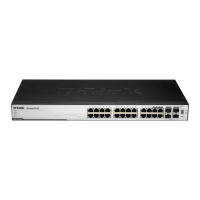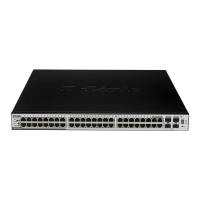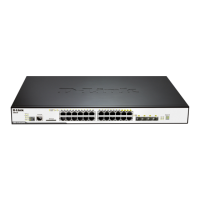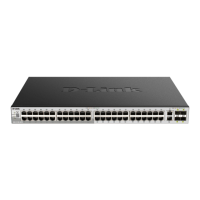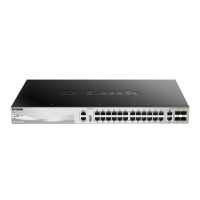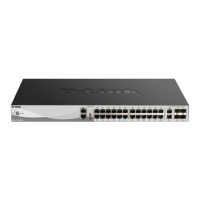DGS-3100 Series Gigabit Stackable Managed Switch User Manual
128
Understanding QoS
The Switch has four priority queues. These priority queues are labeled as 3 (the highest queue) to 0 (the lowest queue). The
eight (0-7) priority tags, specified in IEEE 802.1p are mapped to the Switch's priority tags as follows:
Priorities 1 and 2 are assigned to the Switch's Q0 queue.
Priorities 0 and 3 are assigned to the Switch's Q1 queue.
Priorities 4 and 5 are assigned to the Switch's Q2 queue.
Priorities 6 and 7 are assigned to the Switch's Q3 queue.
For strict priority-based scheduling, any packets residing in the higher priority queues are transmitted first. Multiple strict
priority queues empty based on their priority tags. Only when these queues are empty, are packets of lower priority
transmitted.
For weighted round-robin queuing, the number of packets sent from each priority queue depends upon the assigned weight.
For weighted round-robin queuing, if each CoS queue has the same weight value, then each CoS queue has an equal
opportunity to send packets just like round-robin queuing.
For weighted round-robin queuing, if the weight for a CoS is set to 0, then it will stop processing the packets from this CoS.
The other CoS queues that have been given a nonzero value, and depending upon the weight, will follow a common
weighted round-robin scheme.
Strict Priority should be configured at higher class than WRR.
If the user configures WRR, at least two queues should be configured as WRR.
Remember that the DGS-3100 series has four priority queues (and eight Classes of Service) for each port on the Switch.
This section contains the following topics:
Defining Bandwidth Settings
Configuring Storm Control
Mapping Ports to Packet Priorities
Mapping Priority to Classes (Queues)
Configuring QoS Scheduling Mechanism
Defining DSCP User Priority
Defining Multi-Layer CoS Settings
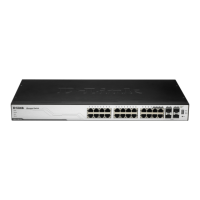
